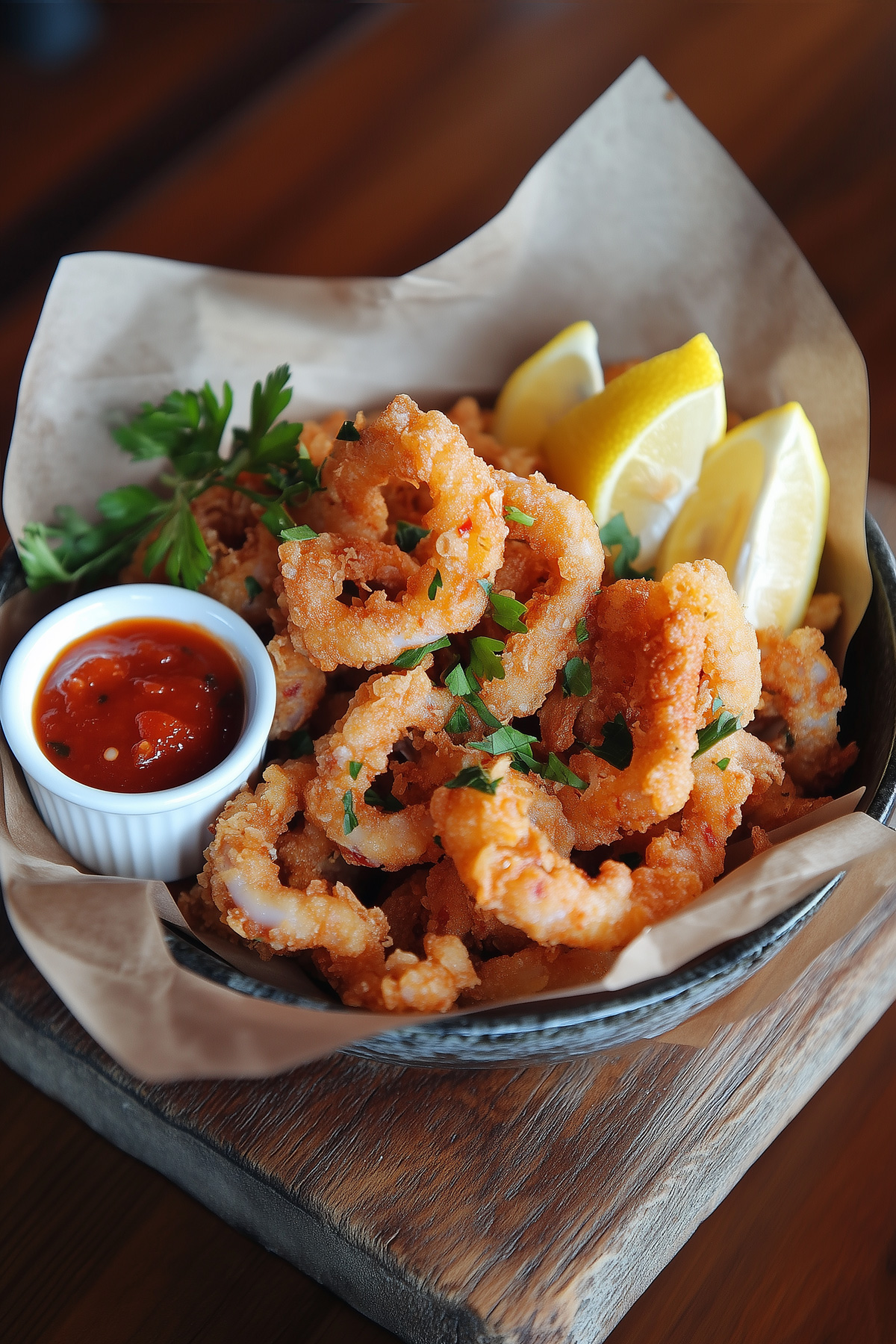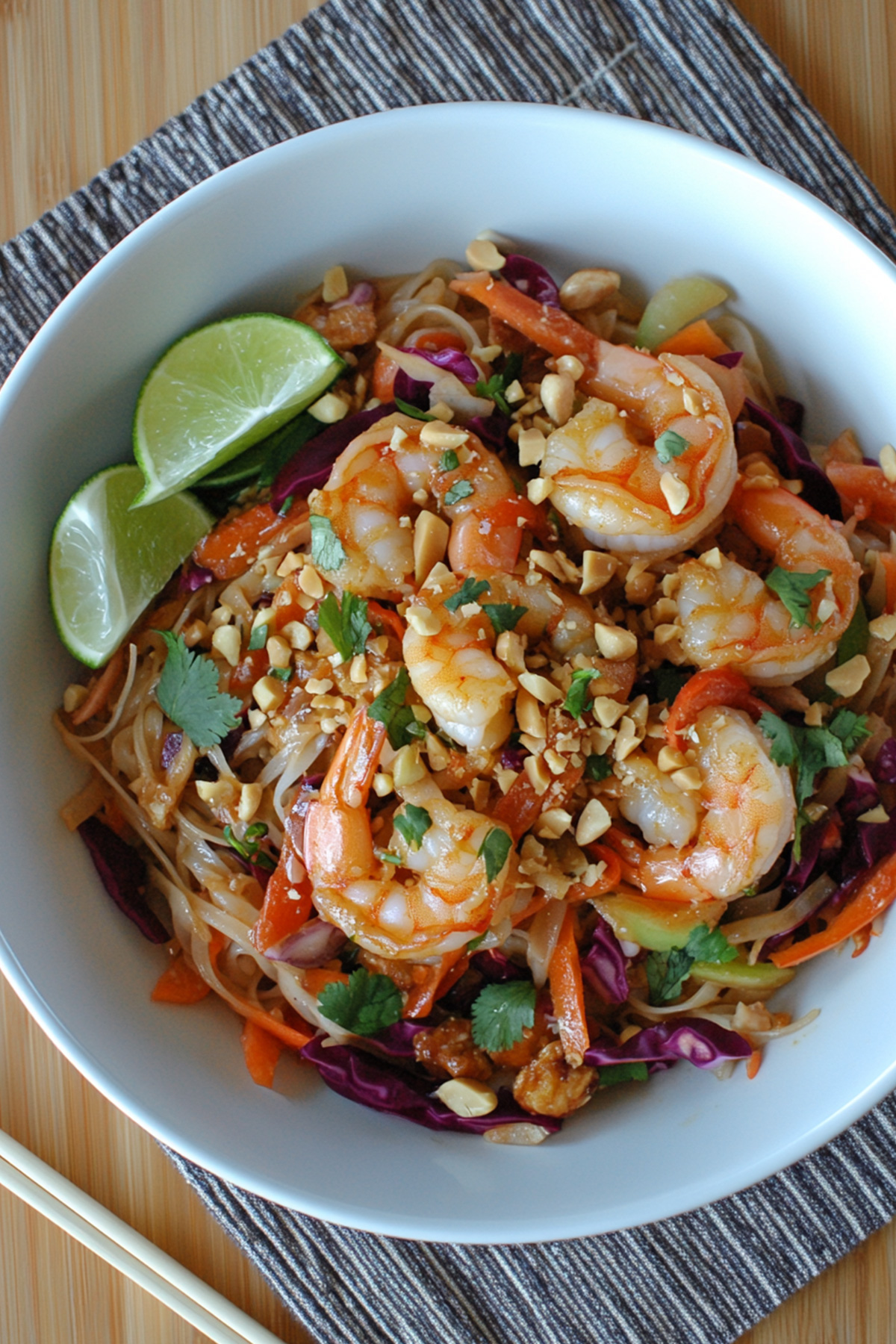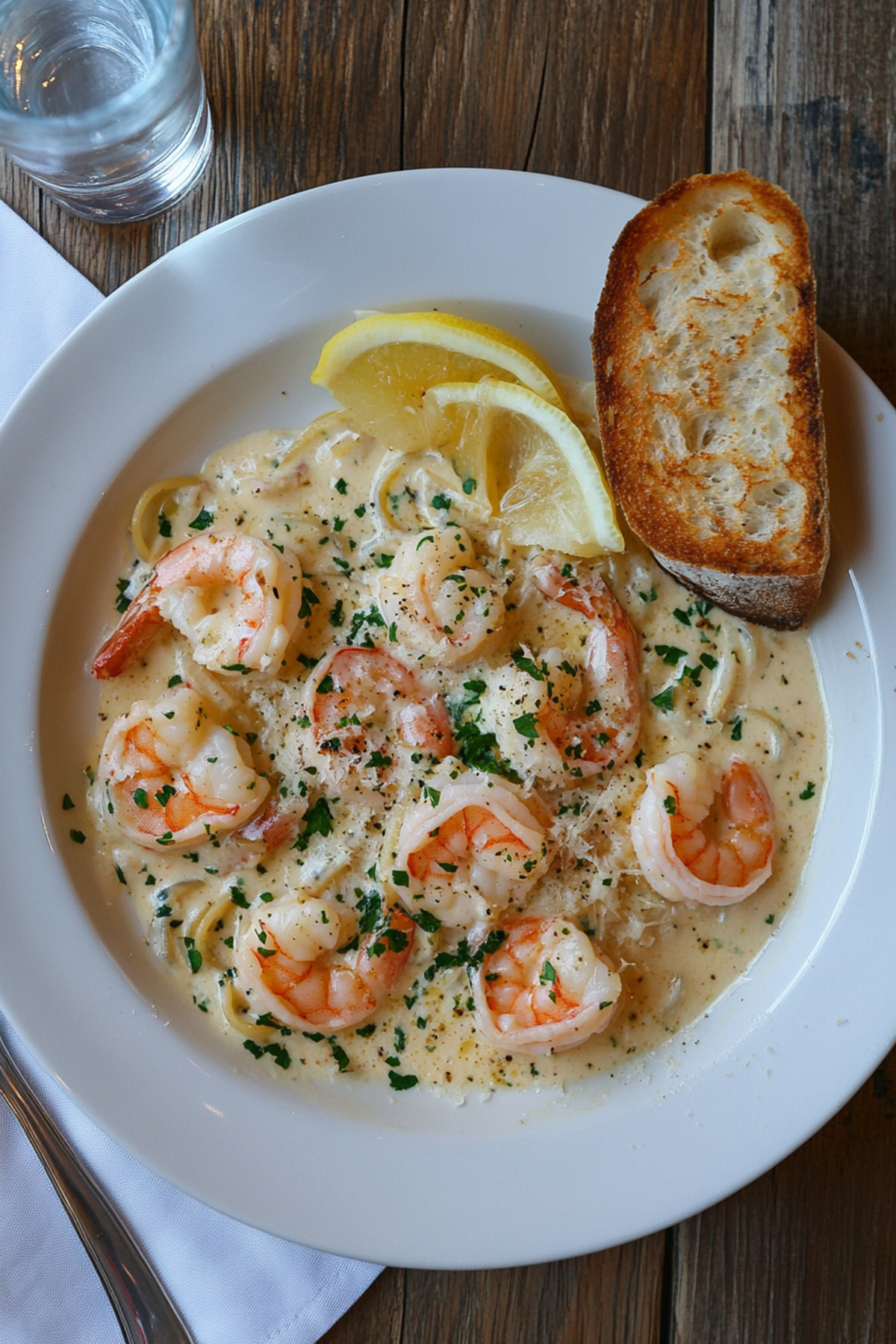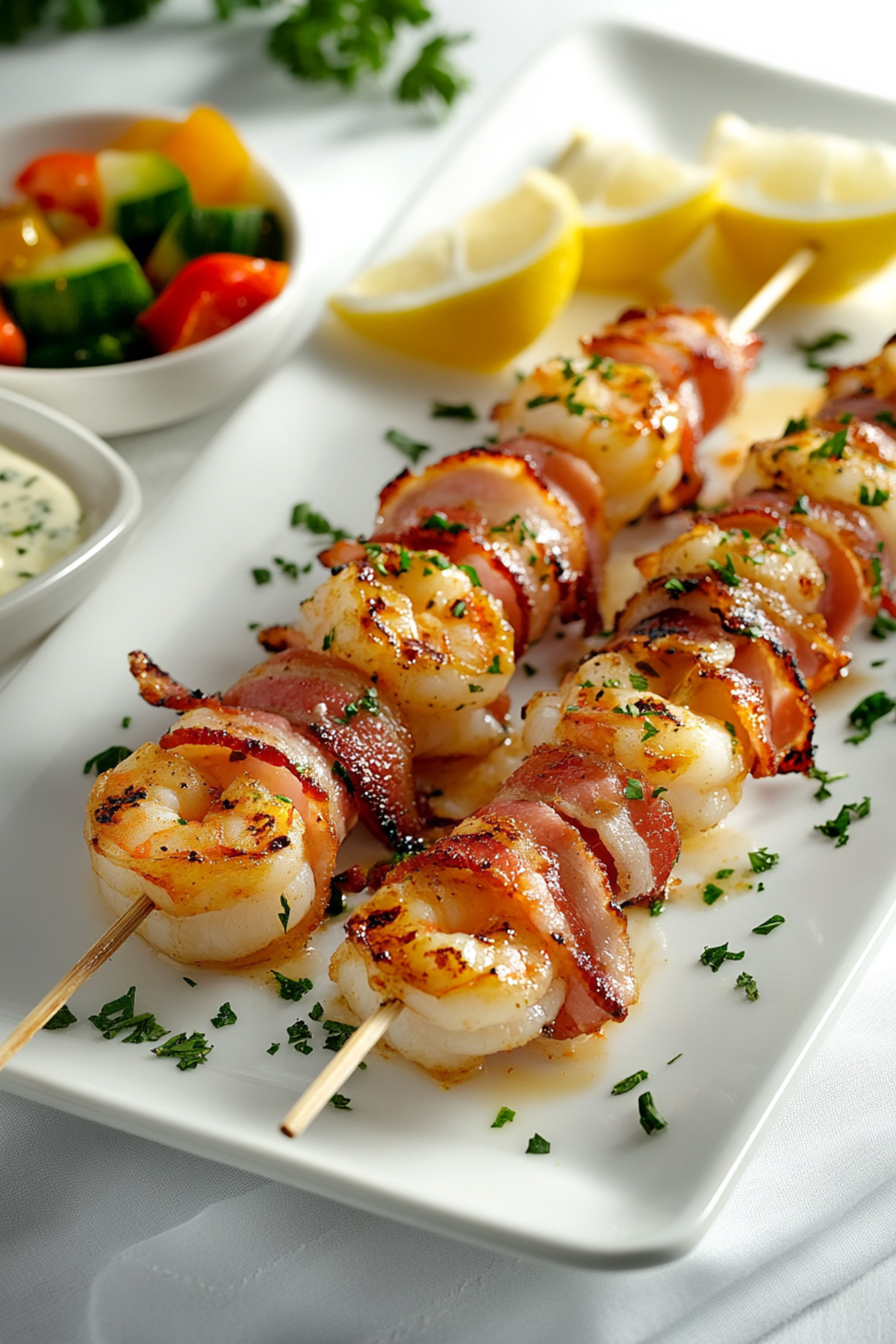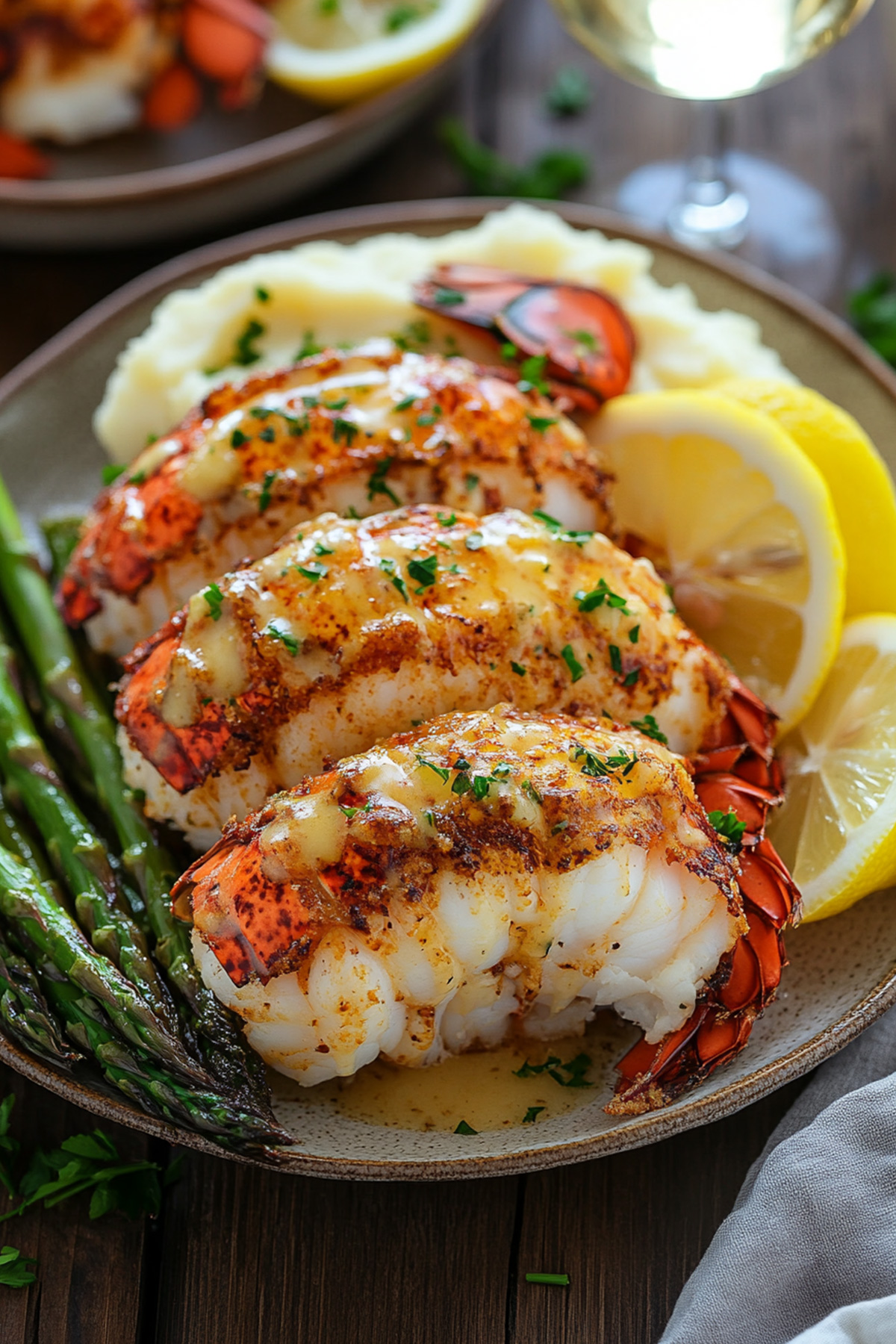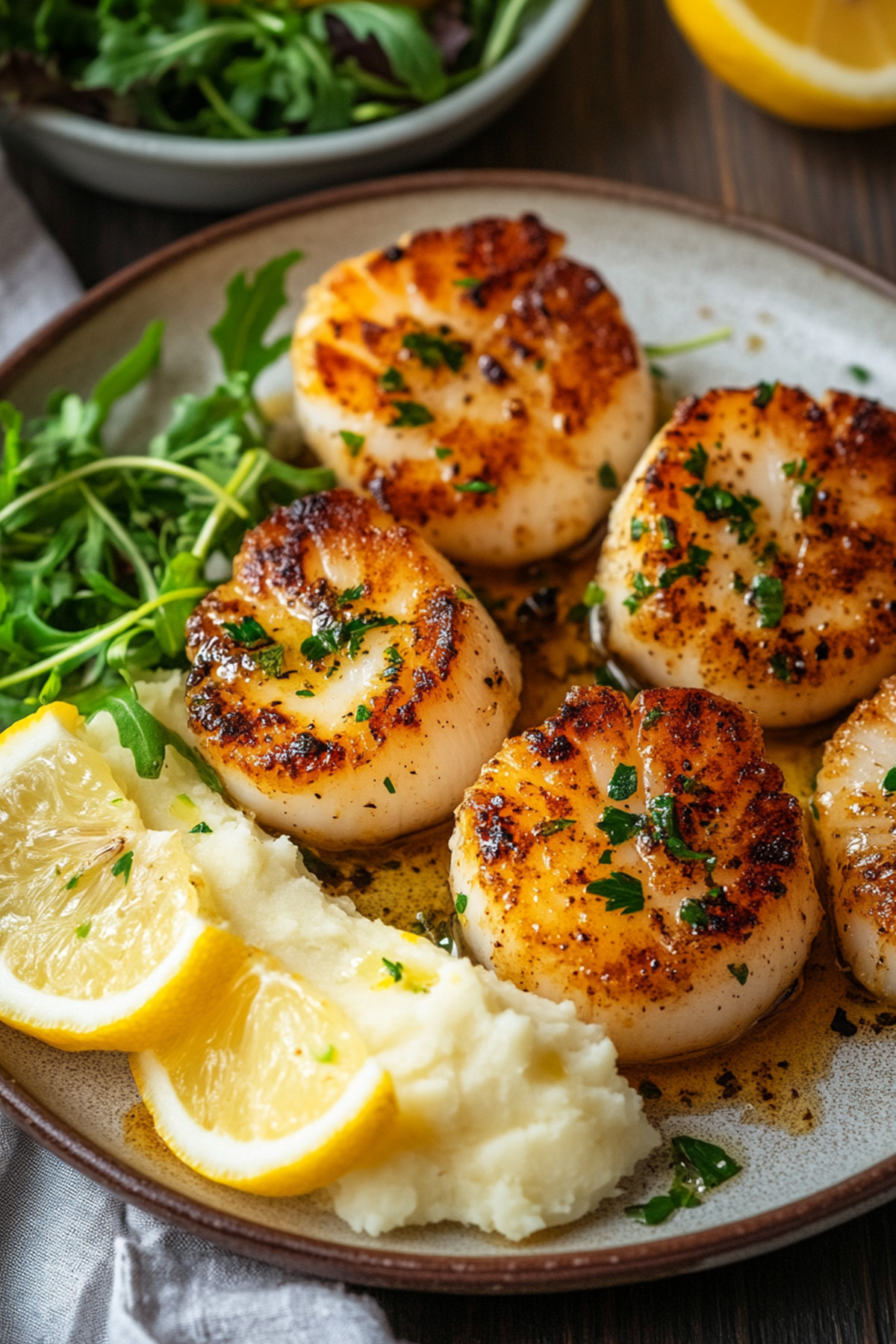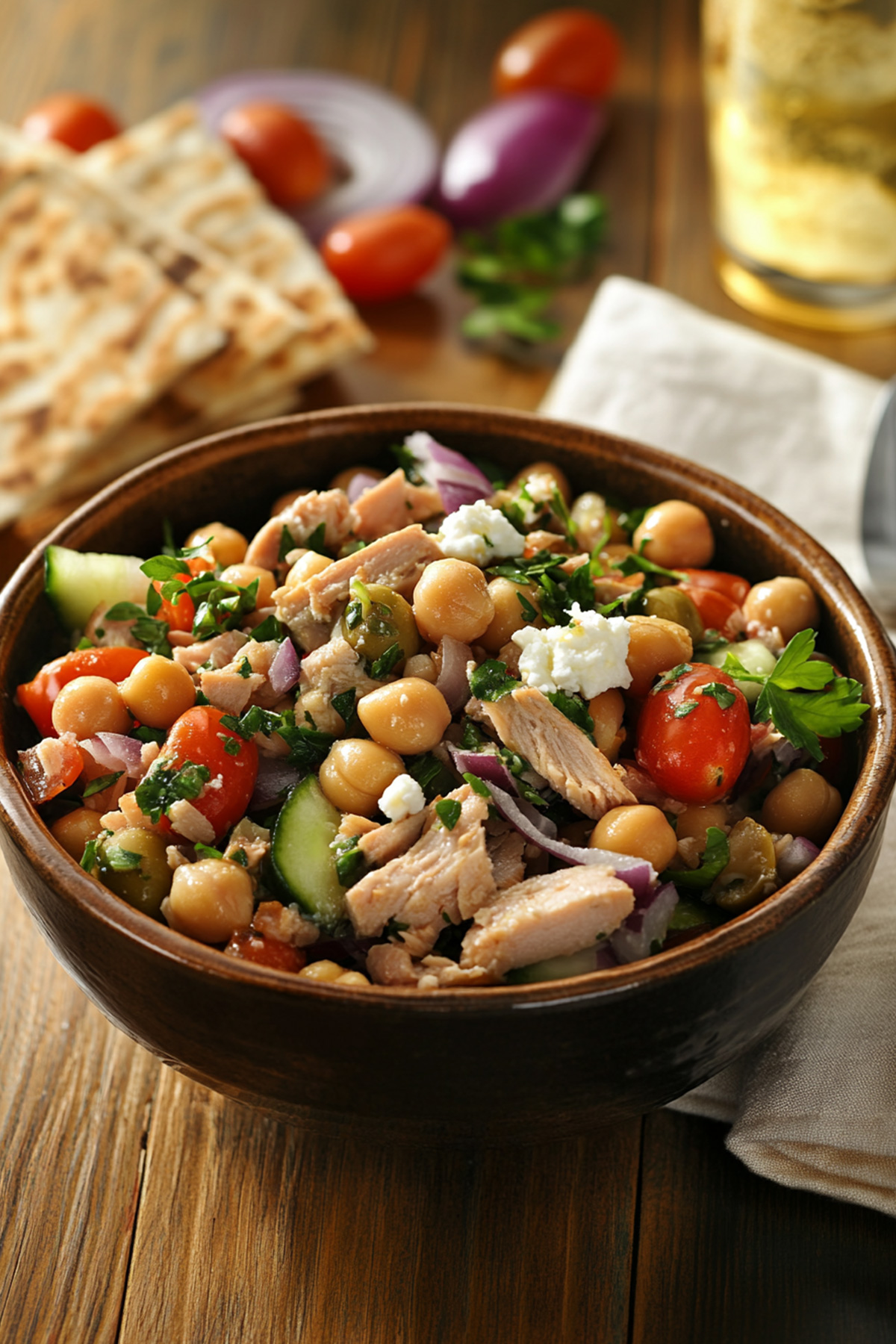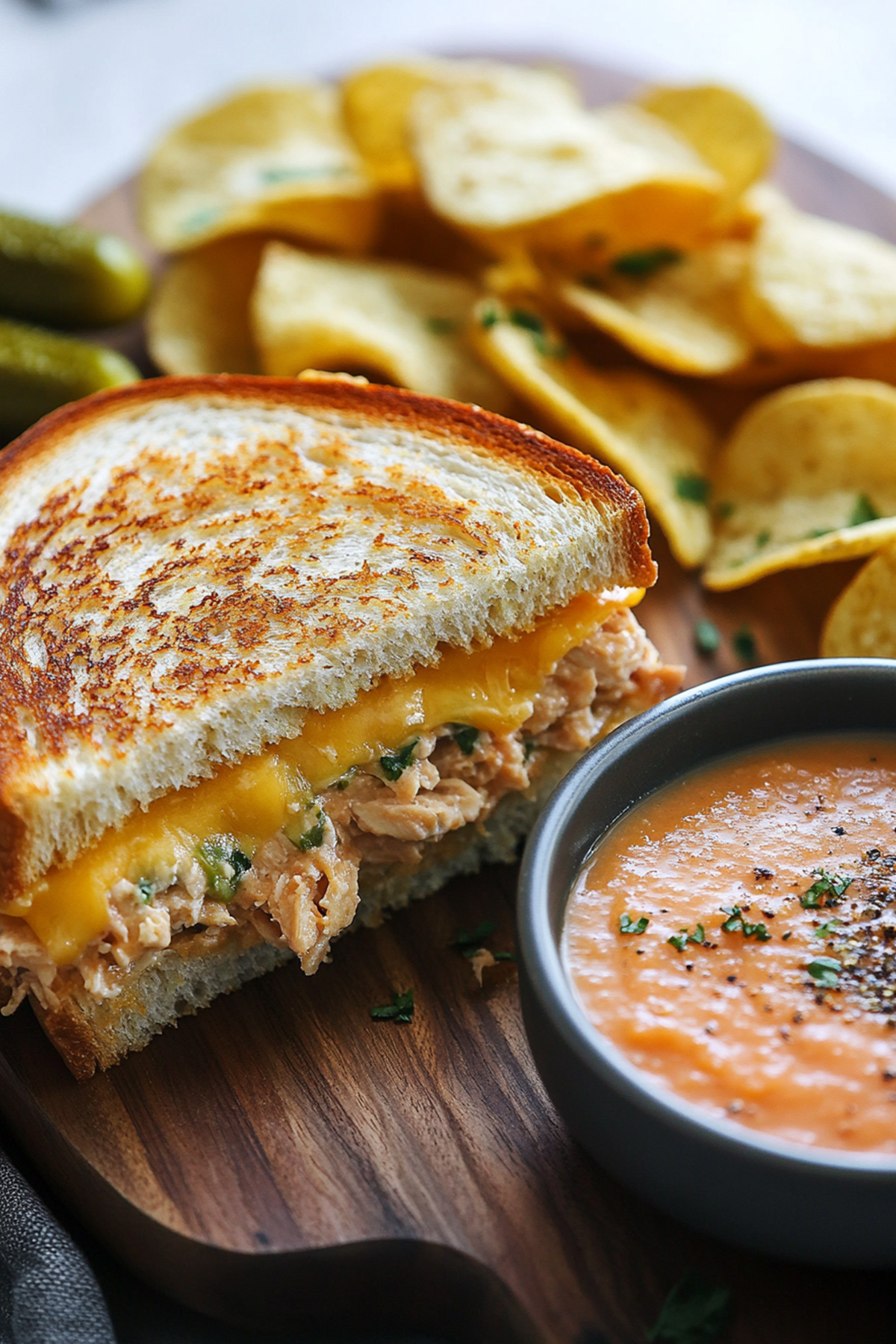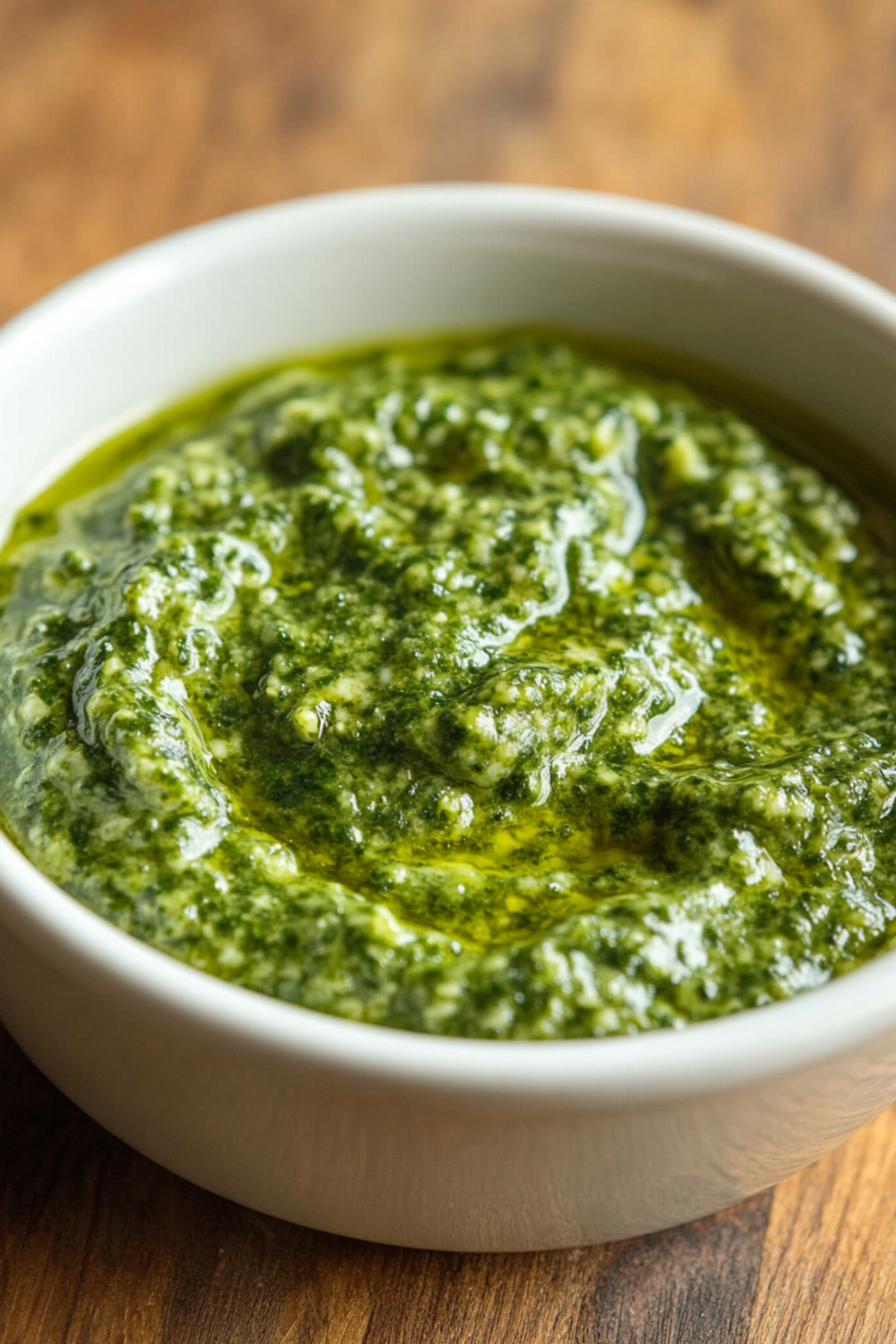Disclosure: As an Amazon Associate and participant in other affiliate programs, we earn from qualifying purchases. We only recommend products we believe will provide value to our readers.
Did you know that among more than 300 species of squid worldwide, only a select few make it to our dinner plates? This Italian fried calamari recipe, passed down through generations, transforms this versatile seafood into a golden, crispy delicacy.
While calamari might seem intimidating to prepare at home, the secret lies in a few crucial techniques. In fact, a simple 30-minute soak in salted milk tenderizes the squid perfectly, while maintaining the right oil temperature between 350 and 365 degrees F ensures that crispy, restaurant-quality texture.
This quick-cooking dish typically requires just 2-3 minutes per batch, making it an ideal choice for both weeknight dinners and special occasions.
Table of Contents
The Art of Italian Fried Calamari Recipe
The preparation of authentic Italian fried calamari embodies generations of culinary expertise passed down through Italian families.
Your journey to mastering this beloved appetizer starts with selecting fresh squid – the foundation of exceptional frittura di calamari.
Proper preparation begins with cleaning the squid meticulously. Start by gently pulling the tentacles away from the body and removing the thin outer membrane. The body should be cut into uniform rings about 1/2 inch thick, ensuring even cooking. The tentacles, when properly cleaned, add both visual appeal and textural contrast to your dish.
Temperature control stands as the cornerstone of achieving that coveted golden-brown exterior. Your oil must maintain a steady temperature between 350-365°F throughout the cooking process.
Additionally, working in small batches prevents temperature drops that could result in greasy, soggy calamari.
The signature coating requires a delicate balance. Your dry mixture should combine flour with a pinch of salt, allowing the natural sweetness of the squid to shine through.
Furthermore, the coating process demands a light touch – excess flour creates a heavy crust that overshadows the calamari’s delicate flavor.
Timing plays a crucial role in achieving the perfect texture. Your calamari needs just 2-3 minutes in the hot oil – any longer risks turning the tender rings into rubber bands. Moreover, proper draining on paper towels ensures your final dish remains crispy, not oily.
The art extends beyond mere cooking technique. Presentation follows traditional Italian style – arrange your golden rings on crisp paper, garnish with fresh parsley, and serve immediately with lemon wedges. This creates an inviting display that honors the dish’s Mediterranean heritage.
Understanding these nuances transforms ordinary fried squid into an authentic Italian delicacy. Each step, from preparation to presentation, reflects centuries of culinary wisdom refined through countless family gatherings and festive celebrations.
Read also: Kerala Fish Fry Recipe
Essential Tools for Making Perfect Fried Calamari
Successful preparation of perfect fried calamari depends heavily on having the right kitchen equipment at your disposal. A heavy-bottomed deep pot or Dutch oven serves as the cornerstone of your setup, providing steady heat distribution and preventing hot spots that could burn your calamari.
Temperature precision makes all the difference, specifically when working with delicate seafood. A reliable cooking thermometer helps maintain that crucial 350-365°F oil temperature range. For accurate measurements, choose a thermometer with a clip-on feature, allowing constant temperature monitoring without holding it.
Sharp kitchen shears and a good quality knife become indispensable during the preparation phase. These tools enable clean cuts through the squid, creating those signature rings without tearing or mangling the delicate flesh. Consequently, your presentation remains professional and appetizing.
Storage and organization call for multiple mixing bowls – one for the cleaned squid, another for your flour mixture, and a third for the milk bath. Stainless steel bowls work best because they maintain temperature and won’t retain odors.
The draining setup proves equally important. A wire rack placed over a baking sheet allows excess oil to drip away while keeping your calamari crispy. Paper towels placed underneath catch the oil, making cleanup easier.
For the actual frying process, a spider strainer or slotted spoon becomes your best friend. These tools allow you to gently lower the calamari into hot oil and remove them once golden brown, all while letting excess oil drain away immediately.
Safety comes first when working with hot oil, notably through the use of long-handled tools and heat-resistant gloves. A splatter screen helps prevent oil burns and keeps your stovetop clean.
The finishing touches require their own set of tools. Serving platters lined with fresh paper towels help maintain that perfect crispiness, whereas small ramekins hold your dipping sauces. Lemon wedge squeezers ensure even citrus distribution without seeds falling onto your perfectly fried calamari.
Storage of leftover oil requires fine-mesh strainers and glass containers. Properly filtered oil can be reused several times, provided you strain out any food particles after each use.
You may like: Fried Cod Recipe

Golden Fried Calamari Recipe
- Total Time: 55 minutes
- Yield: 6 servings 1x
Description
Mastering this traditional fried calamari recipe requires attention to detail and proper technique. This cherished family recipe transforms fresh squid into golden, crispy rings that capture the essence of Italian coastal cuisine.
This authentic Italian recipe features tender calamari rings in a light, crispy coating. The secret lies in the traditional flour-based coating rather than heavy breadcrumbs, allowing the natural sweetness of the squid to shine through.
Ingredients
- 1 pound calamari tubes, cleaned and cut into 3/4-inch rings
- 1 cup all-purpose flour
- 1/2 cup semolina flour
- 1 teaspoon kosher salt
- 1/2 cup whole milk
- Oil for frying (canola or grapeseed)
- Fresh lemon wedges for serving
- Fresh parsley for garnish
Instructions
- Prepare the Calamari
- Rinse calamari rings thoroughly under cold water
- Pat completely dry with paper towels
- Soak in salted milk solution for 30 minutes in refrigerator
- Prepare the Coating
- Mix all-purpose flour and semolina flour in a shallow dish
- Add salt and combine thoroughly
- Heat the Oil
- Pour oil to reach 4 inches in a heavy-bottomed pot
- Heat to 350-365°F
- Coat and Fry
- Remove calamari from milk, allowing excess to drip off
- Dredge in flour mixture, ensuring even coating
- Fry in small batches for 2-3 minutes until golden brown
- Transfer to wire rack lined with paper towels
- Season immediately with salt
Notes
- Tenderize calamari by soaking in salted milk before cooking
- Maintain oil temperature between 350-365°F for optimal crispiness
- Work in small batches to prevent oil temperature drops
- Change oil if it becomes brown or filled with excess flour
- Serve immediately for best texture and taste
- Prep Time: 45 minutes
- Cook Time: 10 minutes
- Category: Seafood
- Method: Frying
- Cuisine: Italian
Traditional Italian Accompaniments for Fried Calamari
Traditional Italian cuisine celebrates the art of complementary flavors, particularly when serving seafood delicacies. A perfectly prepared plate of fried calamari shines brightest alongside carefully chosen accompaniments that enhance its crispy texture and delicate flavor.
Marinara sauce stands as the quintessential pairing for your fried calamari. This light, vibrant sauce combines San Marzano tomatoes with fresh basil, garlic, and extra virgin olive oil. Unlike heavy cream-based dips, marinara preserves the delicate seafood taste while adding a bright acidity that cuts through the richness of the fried coating.
Fresh lemon wedges remain essential on every plate of frittura di calamari. A gentle squeeze of citrus brightens the flavors and adds a refreshing note that balances the richness of the fried coating. Alongside, finely chopped fresh parsley not only adds visual appeal but also brings a subtle herbaceous note to each bite.
For an authentic Italian experience, serve your calamari with peperoncini fritti – lightly fried Italian peppers that add a subtle heat without overpowering the squid’s natural sweetness. These crispy peppers offer a delightful textural contrast and bring additional depth to your appetizer plate.
A crisp, chilled glass of Verdicchio or Pinot Grigio from Italy’s coastal regions perfectly complements fried calamari. These wines feature mineral notes and citrus undertones that harmonize with seafood while cleansing your palate between bites.
In coastal Italian regions, you’ll often find fried calamari served with insalata di mare – a light seafood salad dressed simply with olive oil and lemon juice.
This pairing creates a complete seafood experience, offering both hot and cold elements on the same plate.
For those seeking additional sauce options, aioli all’aglio – a garlic-infused mayonnaise – provides a creamy alternative to marinara. This sauce should be used sparingly to avoid masking the calamari’s delicate flavor profile.
The presentation plays a crucial role in the Italian dining experience. Arrange your calamari on crisp paper-lined plates, surrounded by lemon wedges and fresh herbs. Small bowls of warm marinara and aioli should be placed strategically for easy sharing, embodying the communal spirit of Italian dining.
Read also:
– Chinese Fried Fish Recipe
– Fried Flounder Recipe
Remember to serve your accompaniments at their proper temperatures – warm sauces should be heated gently, while citrus and herbs should remain fresh and cool. This temperature contrast enhances the overall dining experience and showcases your attention to detail in preserving authentic Italian serving traditions.
Health Benefits of Calamari
Beyond its delectable taste, calamari offers substantial nutritional benefits that make this seafood dish even more appealing. Squid stands out as a protein-rich food choice, providing essential nutrients while remaining relatively low in calories.
The protein content in calamari supports muscle maintenance and growth, making it an excellent addition to your balanced diet. A single serving packs a powerful protein punch while containing minimal saturated fat.
Subsequently, this makes it a smart choice for those watching their fat intake without compromising on taste.
Calamari primarily contains omega-3 fatty acids, which play a vital role in heart and brain health. These beneficial fats work alongside the high protein content to create a nutritionally dense meal. Although frying adds calories, choosing the right oil and proper cooking techniques helps maintain many of these nutritional benefits.
Your body receives essential minerals from calamari, including zinc, copper, and selenium. These minerals essentially support various bodily functions, from immune system strength to thyroid health. The presence of B vitamins, particularly B12, aids in energy production and red blood cell formation.
The cooking method significantly influences the final nutritional profile of your calamari dish. This traditional Italian preparation method, using a light flour coating instead of heavy breadcrumbs, helps preserve the natural nutritional benefits while adding that signature crispy texture.
For those mindful of cholesterol, calamari contains dietary cholesterol but minimal saturated fat when properly prepared. The key lies in the cooking oil temperature – maintaining it at the optimal range prevents excessive oil absorption while securing that perfect golden crust.
Portion control remains crucial when enjoying fried calamari. A moderate serving provides satisfying protein without overwhelming your daily caloric intake. Nevertheless, the dish’s nutrient density makes it a worthwhile addition to your meal rotation.
Consider pairing your fried calamari with the traditional accompaniments mentioned earlier – fresh lemon and herbs add extra nutritional benefits through vitamin C and antioxidants.
This combination creates not just a flavorful experience but also a more nutritionally balanced appetizer or main course.
References:
– Oh my facts
– Nutrition Advance
Remember that while enjoying this crispy delicacy, you’re also consuming valuable nutrients that support overall health. The protein-rich nature of squid, combined with its mineral content, makes this traditional recipe both satisfying and nutritious when prepared thoughtfully.
Nutritional Information
Understanding the exact nutritional composition helps make informed decisions about incorporating this classic Italian dish into your meal plan.
A detailed breakdown reveals the complete nutritional profile of a standard serving of fried calamari prepared using this traditional recipe.
The following table presents the nutritional values per 100-gram serving of fried calamari:
| Nutrient | Amount |
|---|---|
| Calories | 175 kcal |
| Total Fat | 7.5g |
| Saturated Fat | 1.2g |
| Cholesterol | 260mg |
| Sodium | 310mg |
| Total Carbohydrates | 8g |
| Dietary Fiber | 0g |
| Sugar | 0g |
| Protein | 20g |
| Iron | 1.5mg |
| Calcium | 32mg |
| Potassium | 265mg |
The macronutrient distribution in this dish primarily consists of protein, making up approximately 46% of total calories. Accordingly, fats contribute around 39% of calories, with carbohydrates accounting for the remaining 15%.
Looking at micronutrients, a single serving provides roughly 15% of your daily iron requirements. Generally, the sodium content remains moderate compared to other fried appetizers, though this varies based on seasoning preferences.
The caloric density depends significantly on portion size. A typical appetizer portion (about 6-8 pieces) contains approximately 250-300 calories, making it a reasonable choice when enjoyed as part of a balanced meal.
For those tracking their daily intake, consider that the protein-to-fat ratio stays relatively favorable despite the frying process. The light flour coating adds minimal carbohydrates while creating that signature crispy exterior.
Portion control plays a key role in managing the nutritional impact. A moderate serving size of 6-8 pieces strikes an ideal balance between satisfaction and nutritional goals. The protein content helps create satiety, potentially preventing overindulgence.
The cooking method affects the final nutritional profile. Maintaining proper oil temperature minimizes absorption, resulting in a lighter dish. Fresh oil and proper draining techniques further help control the fat content while preserving the authentic taste and texture.
Mindful of dietary restrictions, this dish contains both seafood and gluten from the flour coating. Those following specific dietary guidelines should consider these factors when planning their meals.
The mineral content varies slightly based on the squid’s origin and season. Typically, wild-caught squid offers marginally higher mineral content compared to farmed varieties, though both provide excellent nutritional value.
References:
– Healthline
– Eat This Much
Remember that accompaniments like marinara sauce or aioli will add to these base nutritional values. Traditional lemon wedges contribute negligible calories while enhancing flavor and providing a small boost of vitamin C.
Frequently Asked Questions About Fried Calamari
Common questions about fried calamari preparation often focus on achieving that perfect golden crunch while maintaining tenderness. Here’s a comprehensive guide to address your key concerns:
How can I prevent my calamari from becoming rubbery?
First and foremost, avoid overcooking. The 2-3 minute frying time remains crucial. As such, work in small batches to maintain proper oil temperature. A milk bath before cooking helps tenderize the squid naturally.
What’s the best way to store fresh squid before cooking?
Store cleaned squid in an airtight container, placed on ice in the refrigerator. Primarily, use within 24 hours for optimal freshness. Indeed, fresh squid should have a mild ocean scent and appear translucent.
Can I prepare the coating mixture in advance?
The flour mixture stays fresh in an airtight container for several days. Similarly, you can clean and cut the squid ahead of time, but coat it just before frying for the crispiest results.
What causes the coating to fall off during frying?
Excess moisture remains the main culprit. Pat the squid completely dry before coating. Furthermore, ensure the oil maintains proper temperature – too low causes the coating to absorb oil and separate.
How do I know when the calamari is perfectly cooked?
Watch for a light golden-brown color and floating to the surface. The rings should appear slightly curled. Ultimately, a test piece should feel tender, not chewy.
Can I reuse the frying oil?
Strain the cooled oil through a fine-mesh sieve. The oil remains usable for 2-3 more frying sessions, provided it hasn’t darkened or developed off-flavors.
What’s the best way to reheat leftover fried calamari?
Place in a single layer on a baking sheet. Heat in a preheated 375°F oven for 5-7 minutes. This method helps restore crispiness without overcooking.
Why does my coating appear patchy or uneven?
Shake off excess flour gently yet thoroughly. Additionally, ensure the squid pieces aren’t crowded in the pot – they should float freely in the oil.
Can I freeze uncooked, cleaned squid?
Wrap well in plastic and place in an airtight container. The squid maintains quality for up to three months. Thaw overnight in the refrigerator before use.
What causes excess oil absorption?
Oil temperature dropping below 350°F leads to greasy calamari. Moreover, overcrowding the pot prevents proper heat circulation. Use a thermometer to monitor temperature consistently.
How can I achieve restaurant-style presentation?
Serve immediately after cooking, arranged on paper-lined plates. Stack rings vertically for height, and garnish with fresh parsley and lemon wedges for visual appeal.
What’s the ideal thickness for calamari rings?
Cut rings approximately 1/2 inch thick. This thickness ensures even cooking while maintaining tenderness. Rings cut too thin become tough quickly.
Remember that practice leads to perfection with this classic Italian appetizer. Each batch teaches you something new about timing, temperature control, and technique.
Conclusion
Mastering Italian fried calamari brings together culinary tradition, technical precision, and nutritional value.
Though seemingly complex, this cherished recipe becomes approachable when you understand the fundamental techniques and use the right tools.
Remember that success lies in the details – maintaining proper oil temperature, preparing fresh squid correctly, and timing each batch perfectly. These elements work together to create that signature golden-brown exterior while preserving the tender, delicate texture inside.
Beyond its irresistible taste, this seafood delicacy offers substantial nutritional benefits, particularly high-quality protein and essential minerals.
Paired with traditional accompaniments like marinara sauce and fresh lemon wedges, your homemade calamari will rival any restaurant version.
Armed with these insights and techniques, you’ll find that creating authentic Italian fried calamari at home becomes both achievable and rewarding.
Each batch offers another opportunity to perfect your technique, bringing you closer to the timeless flavors of Italian coastal cuisine.

